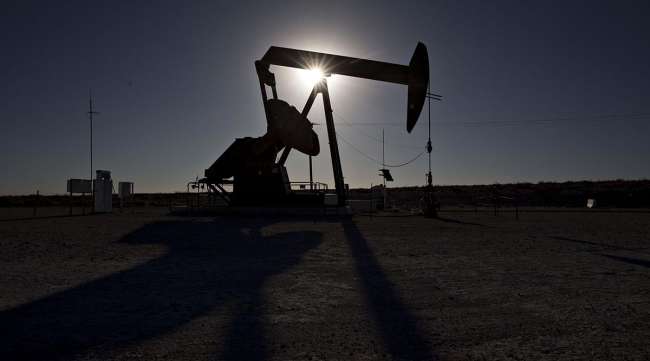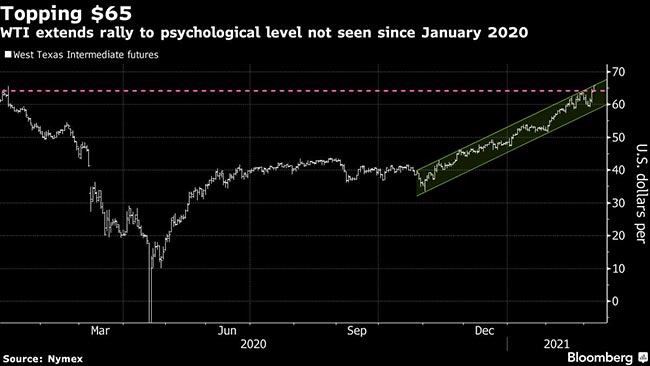Bloomberg News
Oil Soars Above $66, Highest in Two Years

[Stay on top of transportation news: Get TTNews in your inbox.]
Oil rallied to the highest in nearly two years in New York after OPEC+ shocked markets with a decision to keep supply limited as the global economy starts to recover from the pandemic-driven slump.
U.S. benchmark crude futures topped $66 a barrel on March 5, while its global counterpart Brent edged closer to the key $70-a-barrel level. The producer alliance’s aggressive supply management and the continued rollout of vaccines worldwide has aided a stellar rebound for crude since the depths of the coronavirus-related fallout. The surprise decision of OPEC+ on March 4 to keep output steady in April has accelerated those price gains, spurring a wave of upgrades in oil price forecasts by major banks and a surge in the market’s structure.
“In some ways, even more important than the lack of oil, was the message that came with it: They’re not really worried about price, not worried about tightening,” said Paul Horsnell, head of commodities research at Standard Chartered. “In the short term, certainly through to the April meeting, the market can go where it wants. The door is wide open to prices beyond $70.”

Fleets are investing in tech-based safety tools that inform and forewarn potential risk. But how do they condition and prepare drivers to respond to safety alerts? Find out as the RoadSigns Team speaks with Tom DiSalvi, VP of safety at Schneider National, and Charlie Mohn, director of product innovation at Drivewyze. Hear a snippet, above, and get the full program by going to RoadSigns.TTNews.com.
Crude in New York has soared over 35% so far this year, setting multiyear highs with OPEC+ output restraint holding the market over until a full-fledged comeback in consumption. The group’s latest decision represents a victory for Riyadh, which has advocated for tight curbs to keep prices supported.
“Overall, this was the most bullish outcome we could have expected,” JPMorgan Chase & Co. analysts, including Natasha Kaneva, wrote in a note to clients.
The Organization of Petroleum Exporting Countries and its allies including Russia had been debating whether to restore as much as 1.5 million barrels a day of output. As part of the March 4 agreement, Russia and Kazakhstan were granted exemptions, allowing them to increase supply marginally in April.
Saudi Arabia’s bold and unexpected gamble to restrain production is founded upon its view that, this time around, higher prices will not lead to a big increase in output by American shale drillers. Saudi Energy Minister Prince Abdulaziz bin Salman said in an interview after the meeting that shale companies were now more focused on dividends.

West Texas Intermediate for April delivery advanced $2.26 to settle at $66.09 a barrel, the highest level since April 2019.
Brent for May settlement climbed $2.62 to end the session at $69.36 a barrel.
Oil’s rebound this year stands to intensify the debate about a potential resurgence in inflation, and complicate the task facing the Federal Reserve as it supports the U.S. recovery. The Treasury market is already looking for signs of faster price gains, with yields rising rapidly.
Want more news? Listen to today's daily briefing below or go here for more info:




